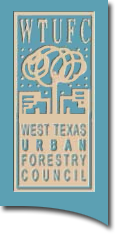Care & Maintenace
Growth rate and longevity are drastically slowed and shortened due to misunderstanding, old myths and improper methods of tree care.
Establishment Period
Just because you have selected a desert native tree, you can’t plant it, walk away, and expect it to grow. Newly planted trees take up to 3 years for establishment. In order to have a vigorous healthy tree you need to know when and where to water and fertilize. To do this you need to know where tree roots grow. Contrary to popular belief, tree roots don’t seek water or grow down to the water table and not all trees have a taproot. Current research shows that about 80% of small non-woody roots, the ones that absorb water and nutrients, are located in the top 18 inches of soil. Ninety percent of the tree’s root system is located in the top 3 feet of soil and the roots grow laterally each year extending 2 to 3 times beyond the drip line. A 30-foot tall tree could have roots growing as far away as 60 to 90 feet from the trunk.
Watering
There is no magical formula or exact rule for watering. Watering is based on the site condition, time of year, type of tree and, most importantly, soil type. Clay soils, while taking longer to wet, will retain moisture longer. Sandy soils, which easily absorb water also, dry faster. KNOW YOUR SOIL TYPE!
Rule of Thumb for Watering: Fill the water basin, allow the water to soak into the ground and fill the basin again. Two to three days after the initial watering, check the backfill soil and the root ball soil (they will be different in texture). Get on your hands and knees, dig into the soil and feel it. If the soil is moist, check back in a couple of days. Repeat this process until you have determined the best watering schedule for your tree. If the soil stays squishy wet, you have a drainage problem or you’re over watering. If the soil is crumbly, dry and hard, you’re not watering enough. Keep the soil evenly moist to a depth of 12 to 18 inches. Using mulch will retain soil moisture and conserve water. The water basin needs to be upgraded and enlarged in diameter at the beginning of each growing season.
Irrigation Systems
With drip irrigation systems, a watering basin is usually not present. The slow dripping action of the system allows water to be applied deeply without runoff. Be sure to inspect all emitters at the beginning of, and periodically throughout each season, to ensure proper watering. Design the system so that it can grow with the trees. A bubbler placed next to a new tree will only provide watering capabilities for a couple of years. Remember that the watering area of a tree increases annually as the root system expands laterally. Do not depend on impact or popup irrigation systems to properly water your trees!
Winter Watering
Don’t forget to water your trees at least once a month from November through February, especially evergreen trees. As long as the soil temperatures are 40ºF or above tree roots will still be active and growing. During our mild and warm winters days, trees will also be transpiring and using water.
Inspection
Inspect your tree on a weekly basis looking for signs or symptoms of pests. It is much easier to control a pest problem if you discover it early.
Weed Control
All plants around the tree are competing for the same valuable water and nutrients. During the establishment period, it is important to keep the area around your tree clear of weeds and grass. Pull weeds or use a herbicide labeled as safe to use around trees. Before spraying, remove root suckers and water sprouts growing around and at the base of the tree to avoid accidental poisoning of the tree. WEED AND FEED PRODUCTS ARE DESIGNED FOR USE ON TURF AREAS ONLY! If you have trees or desirable shrubs growing in or next to turf areas, do not use this product. ALWAYS READ AND FOLLOW LABEL INSTRUCTIONS!
Staking
If your tree is staked, check the ties weekly and adjust them if needed. The stakes can usually be removed after one growing season. Here in West Texas, wait until the spring winds have subsided.
Mechanical Damage
We are our trees, worst enemy, especially when we arm ourselves with mowers and string trimmers. Please avoid hitting and scraping the bark of trees. The growing layer, called the cambium, lies just beneath the bark. If this is damaged is stays damaged. Trees do not heal; they have to expend more energy in order to grow new wood around the wound, instead of putting the energy into added growth.
Mature and Established Trees
A good monthly soaking maybe twice a month during hot dry periods, should be all your mature tree requires. Water at the dripline of the tree. Place a trickling water hose on the ground and leave it until the soil is sufficiently wetted to a depth of 12 to 18 inches. Move the hose around the dripline of the tree until the entire root system is wet.
You can save money and time by correctly applying, or not applying, the proper fertilizer. In West Texas, nitrogen and organic matter is usually lacking in our soils. So that you’re not guessing, have a soil test done. This will tell you what is lacking and what is present in the soil. Most mature trees in a lawn situation receive the nutrients needed from lawn fertilizer applications.
